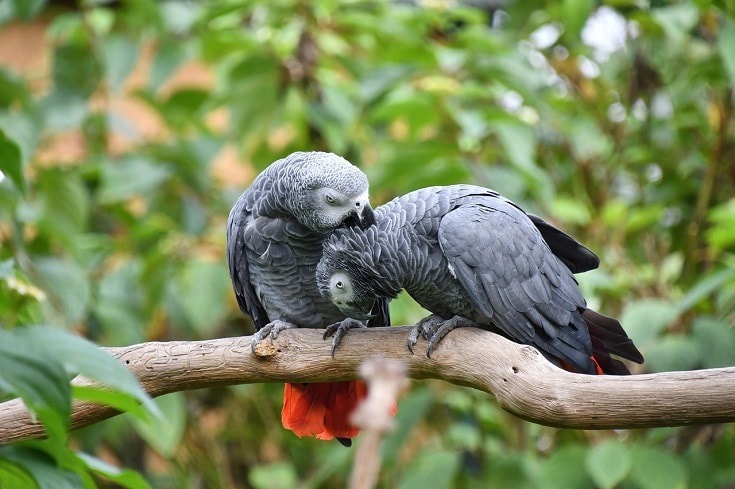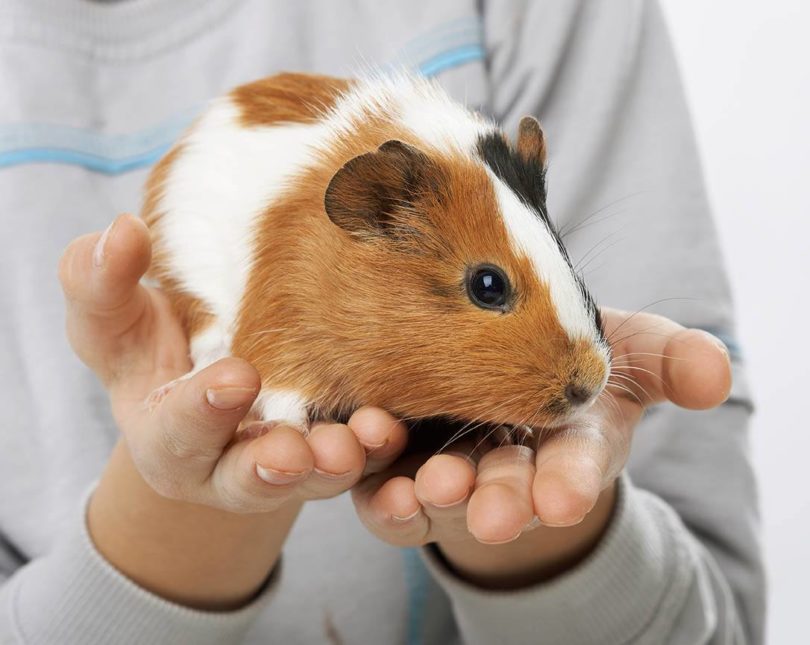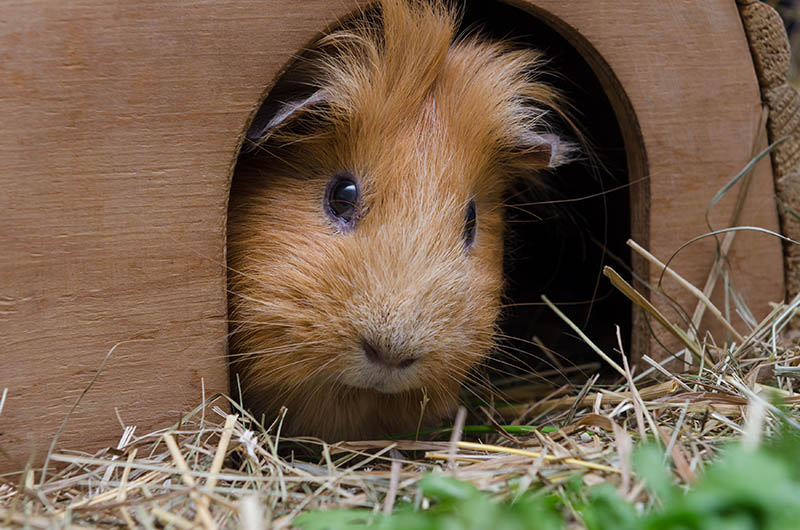VET APPROVED

The information is current and up-to-date in accordance with the latest veterinarian research.
Learn more »Click to Skip Ahead
African Grey parrots (Psittacus erithacus) indigenous to central Africa. While they might not be the most colorful parrots, they are amongst the world’s most intelligent birds. They are one of the best mimics of human speech and are believed to have cognitive abilities equivalent to a 6-year-old child. Given the social nature and intelligence of these sensitive birds, finding the right cage for your African Grey is one of the most important purchases you’ll make. How large does the cage need to be, and what kind of features does it need to have?
We’ll discuss the required size and various topics, such as the cage’s shape and material. The comfort and safety of your grey feathered companion are paramount.

The diet of an African Grey is relatively complex and not easy to manage when they’re kept as pets. Social isolation or the lack of mental stimulation leads to extensive stress in these birds, which perpetuates premature aging and death. They are also extremely long-lived pets and are not a short-term commitment.
As such, we strongly encourage you to thoroughly research the species prior to adopting them. In addition, you should never adopt a wild-caught individual and ensure it is legal to adopt an African grey where you reside prior to adopting one. An individual without verified records and/or a leg band should never be adopted.
How Large Should the Cage Be?
While the African Grey is the largest parrot in Africa, they are closer to medium-sized parrots when compared to all other pet parrots. Perhaps unsurprisingly, it is recommended that you purchase the largest cage that you can fit into your space. Your parrot should be able to fully extend their wings and flap them without touching any of the cage walls.
Ideally, the absolute minimum size of a cage for the African Grey is 36” L X 24” W x 48” H (3 ft x 2 ft x 4 ft). However, for a happy parrot, you should go bigger than this so they have room to move and climb, particularly when you’re away from home. The length of your parrot’s tail is also a factor in the cage size, as you don’t want their tail feathers to become damaged while they are moving around.
Keep in mind that the measurement above factors in that your parrot will be allowed outdoors every day to explore, exercise, or spend some time on a stand or other reasonable perch. They are not suitable for a bird that will be in a cage all the time; in such a scenario you would need a much larger cage.
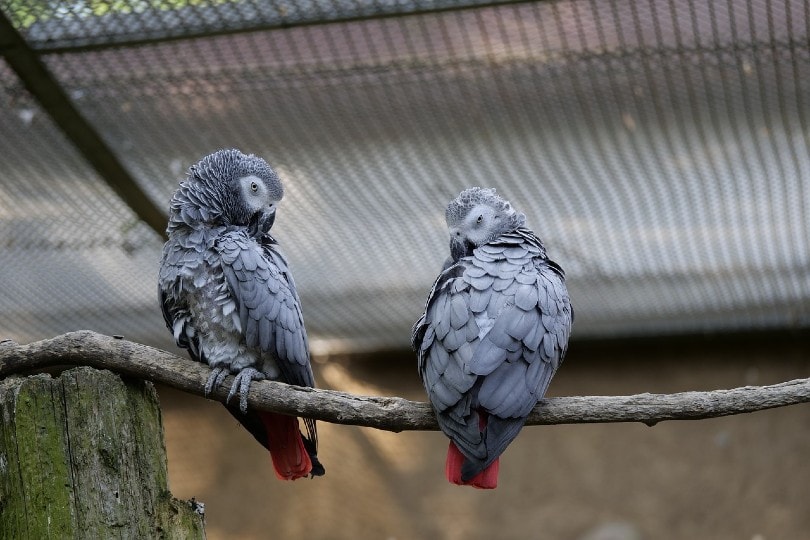
Bar Spacing
How wide the bars are spaced on the cage is another critical consideration for safety reasons. You don’t want your parrot attempting escape and becoming stuck and consequently endangering their life if the bars are too far apart. The bars should also provide your African Grey with the opportunity to climb as well as for you to attach various objects for your bird.
The recommended and safest bar spacing for your African Grey is ¾” to 1” wide.
Vertical or Horizontal Bars
You’ll find some parrot cages with vertical bars, some with horizontal bars, or a mixture of the two. The best cage for your African Grey has horizontal bars since they allow your bird to climb more easily and are a more convenient way to attach feeders, perches, and toys to the bars.
However, the size of the cage is more important than which direction the bars are going in, so if the best cage you can find has vertical bars, your parrot will find a way to climb. Keep in mind that if your bird is mobility-challenged, horizontal bars will be easier for them to climb.
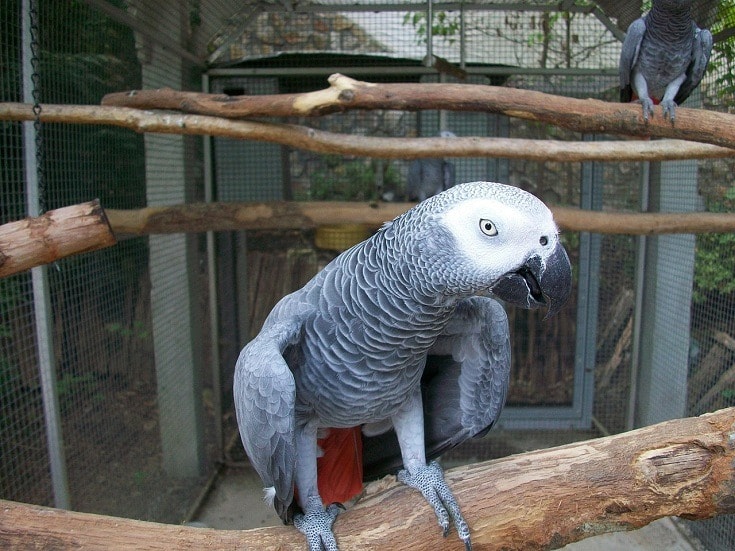

Cage Material
You will find bird cages in various materials and colors. Some of the more common cage materials available are galvanized steel wire, powder-coated wire, or stainless steel. You’ll want to avoid wire cages that are not coated, or you’ll be dealing with corrosion and rust, and you should ensure there aren’t any toxic materials used to make the cage.
African Greys need a stronger material for their cages to withstand their large and strong beaks. For this reason, you’ll want to avoid plastic and wooden cages, as not only could your parrot break them, but wooden cages are more difficult to clean.
Shape of the Cage
Most cages are square or rectangular, which is the best-shaped cage for your parrot. Avoid the rounded cages since they are harder to climb and would actually not give the parrot enough space to fully move around in.
Bottom of the Cage
Most bird cages have slide-out trays, which will make cleaning up much more manageable. Parrots are pretty messy; whether it’s from seed hulls or feathers or droppings, there’s usually a mess coating everything. Some cages come with slanted bottoms that help roll the mess into the slide-out tray rather than your floor. Adding accessories like this cage skirt can also contain the mess.
Access for Cleaning
Another consideration for the parrot cage is how easy it is to access, particularly for cleaning. You should have a cage with an access door big enough to fit both of your hands holding your African Grey. A high-quality cage will have latches and hinges that are durable and reliable.
You should expect to clean the bottom tray of the cage on a daily basis. The entire cage would need to be cleaned out at least once a week, although twice a week is best. You should also thoroughly deep clean and disinfect the cage about once a month.
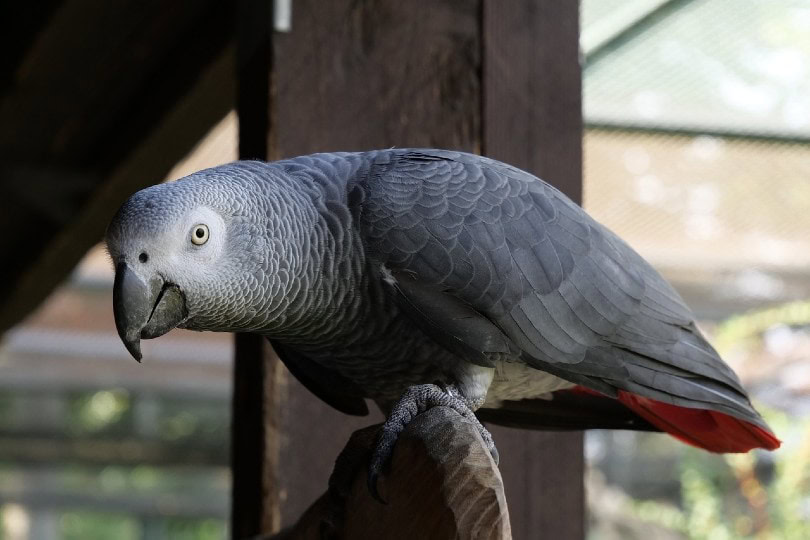
Accessories
Most cages have installed perches, but you’ll want to ensure that there are a variety of perches at different heights and in different sizes and materials. At least one concrete perch will help maintain your parrot’s claws and will, therefore, mean fewer nail trims.
You’ll also want to add toys and other equipment that will help your parrot exercise. Bells, climbing ropes, and swings are ideal accessories.

Location & Features
- No round cages: Not only can they prevent your African Grey from properly spreading their wings, but their design also means that they are bad for your bird’s mental health.
- Location: Place the cage in an area that isn’t busy or noisy and is temperature-controlled and not drafty.
- Size: Following the size requirements mentioned at the top of this article, be sure your African Grey can stretch their wings and move around comfortably (this includes the extra space taken up by adding toys, feeding bowls, and perches). If the cage is too small, your parrot can suffer from psychological disorders such as feather plucking, screaming, and biting.
- Locks: Check that all doors and access points into the cage have durable locks. Your African Grey is smart and might just become a better escape artist than Houdini.
- Play top: The play top is an excellent option if your perfect cage happens to have one. It gives your African Grey a place to hang out that isn’t inside the cage but safely on top. They usually include a perch and sometimes have additional features such as ladders and food bowls
- Wheels: Having wheels on your cage is another great feature so you can take your parrot safely outside and enjoy the fresh air or maybe go to another room for a new view.

Conclusion
Your African Grey will be spending most of their time inside their cage, so finding just the right cage for them is essential. Make sure it has the proper bar spacing and is large enough, and if spending a little extra on a large and durable cage is doable, your Grey is worth it. Keeping your parrot safe and happy should be straightforward if you start by following the steps in this article, and hopefully, you’ll find your African Grey the perfect cage.
- Related Read: How Much Does It Cost to Own a Parrot?
Featured Image: maienkindfotografie, Pixabay
